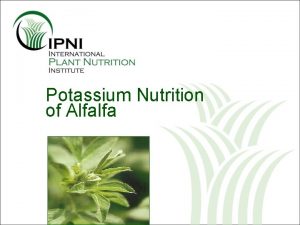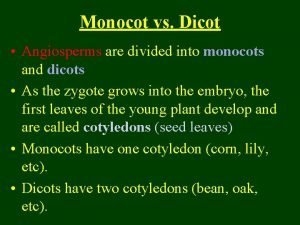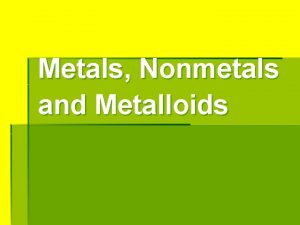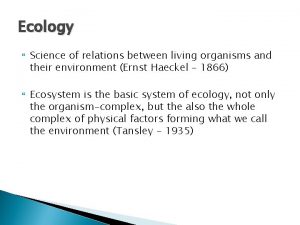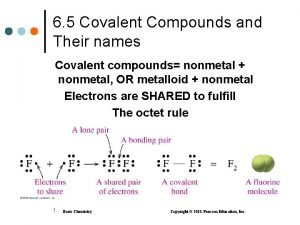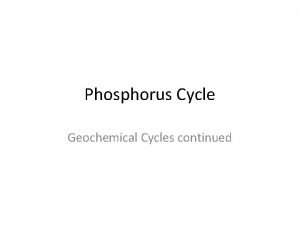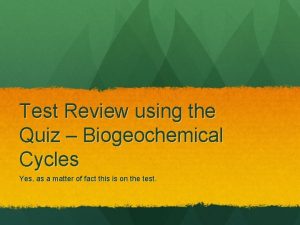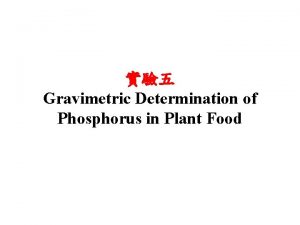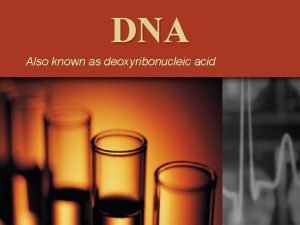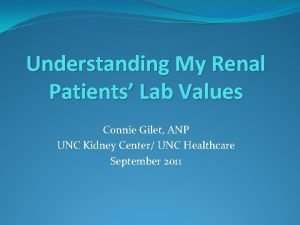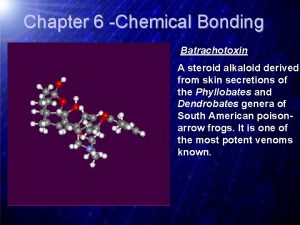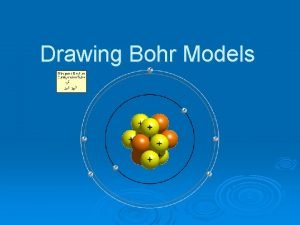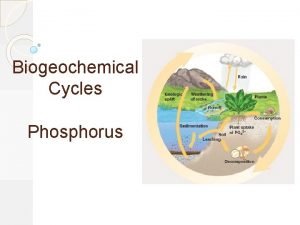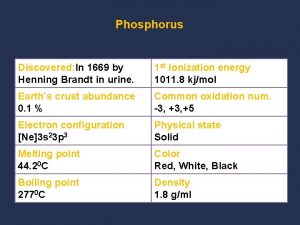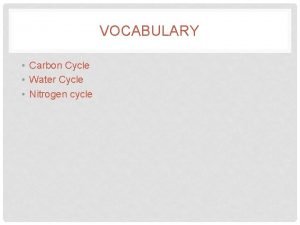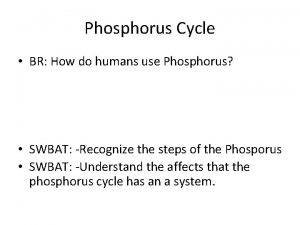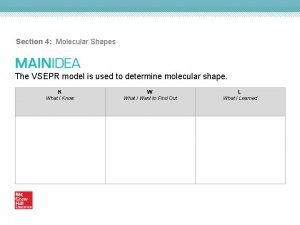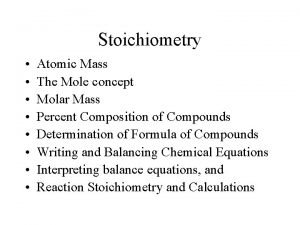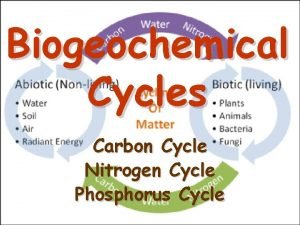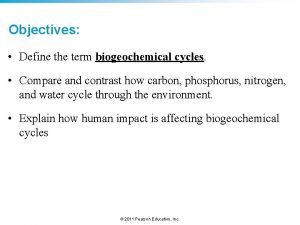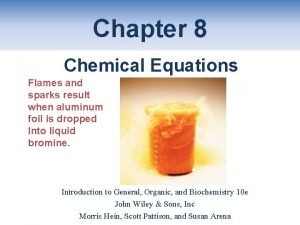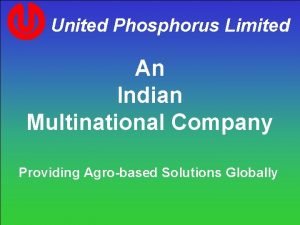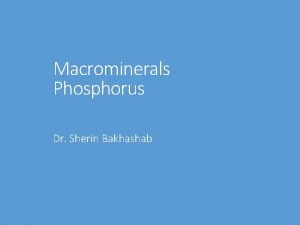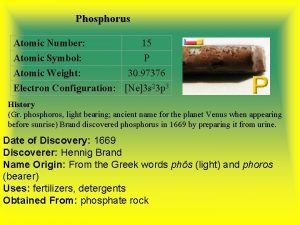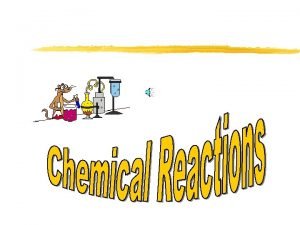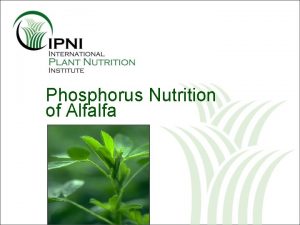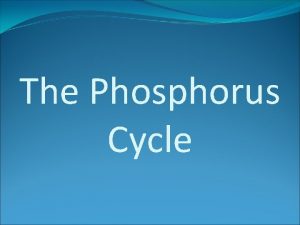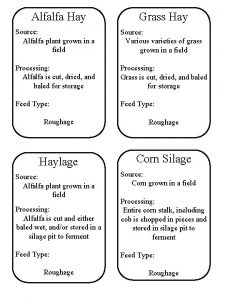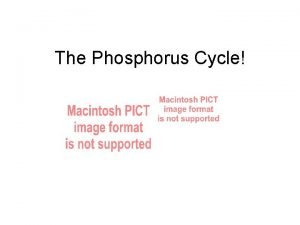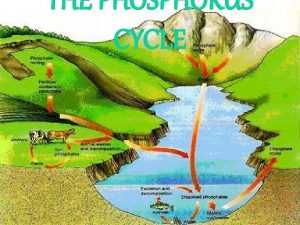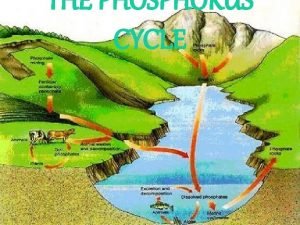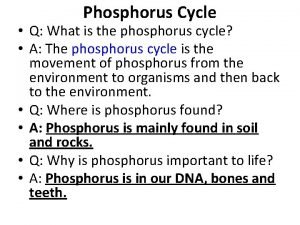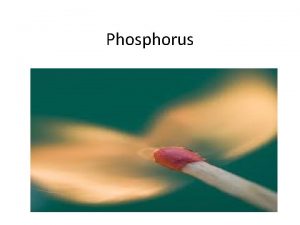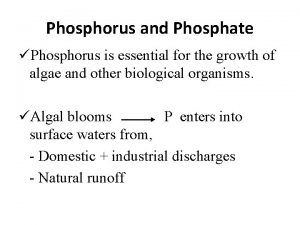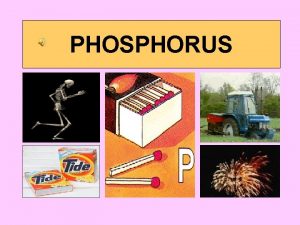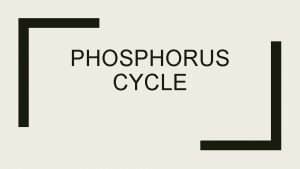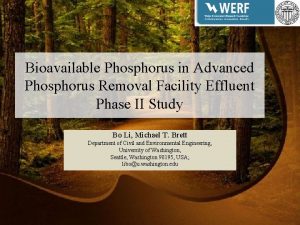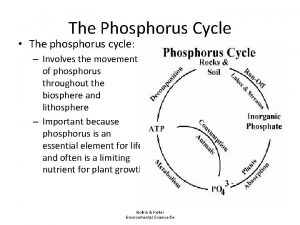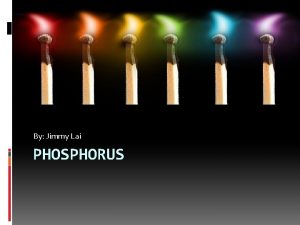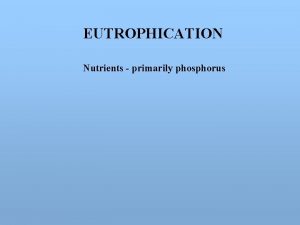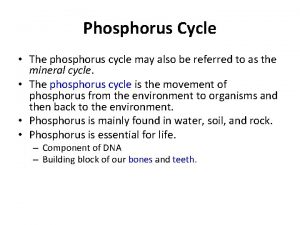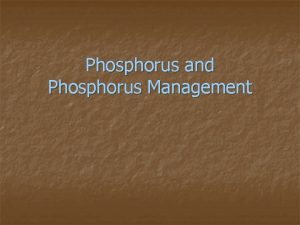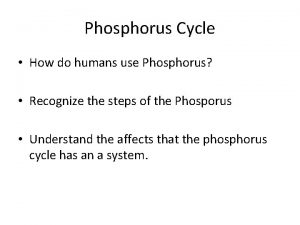Phosphorus Nutrition of Alfalfa Phosphorus P Nutrition of


































- Slides: 34

Phosphorus Nutrition of Alfalfa

Phosphorus (P) Nutrition of Alfalfa Outline: • U. S. alfalfa hay yields keep increasing • Nutrient uptake and removal • Alfalfa root development • General P nutrition • P boosts hay yield, recovery, and quality • P inputs: frequency and source • Requirement for balanced nutrition

Yield, ton/A U. S. Alfalfa Hay Yields… An Upward Trend Year Source: USDA-NASS

Record Yield: Researchers at University of Arizona (Yuma) set record for alfalfa yield in a year: 24. 1 tons/A alfalfa hay in 10 cuttings • • • Optimal and uniform irrigation Chopped hay removed immediately after cutting N fertilizer regularly added – was it needed? 460 lb P 2 O 5/A added before planting K management unknown 1, 440 lb K 2 O and 360 lb P 2 O 5/A removed in hay Ludwick, 2000; Arizona

Alfalfa Nutrient Uptake and Removal • Alfalfa has higher demand for nutrients than most crops Nutrient Amount Removed lb/ton P 2 O 5 15 K 2 O 60 Ca 30 Mg 6 S 6 N (through fixation) 60

Alfalfa Root Development • Most lateral roots are near the soil surface for the first year, but more deep lateral roots develop as the plant ages • Alfalfa has lower root density than many grasses and a deeper rooting zone • P and K application increase root growth, enabling roots to obtain moisture and nutrients from greater volume of soil

Phosphorus in Soils • Total P in many soils (0 to 6 in. ) ranges from 400 to 2, 000 lb/A…but only a fraction of that is available for plant uptake each season Available P Unavailable P

The primary cause of low, short-term uptake of P fertilizer: Higher P concentration Plant root ffu sio n Lower P concentration Di • The inability of P to move to absorbing roots

Temperature Effect on Nutrient Uptake Cool soil temperatures will: • slow nutrient release from soil organic matter • reduce diffusion of nutrients to the roots • hinder root absorption and translocation Adequate P is essential for strong root systems Higher levels of nutrients are needed to support vigorous plant growth in cool soil conditions

P Functions in Plants • Energy storage and transfer – Phosphate compounds are “energy currency” – (such as ADP and ATP) • Structural component of biochemicals – Seed formation – Calcium and magnesium phytate • Maintenance and transfer of genetic code • Root growth, rapid crop establishment • Early maturity, quicker recovery

P Fertilization Increases Nodulation Number of nodules Soil P, ppm Soil water holding capacity Azcon et al. , 1988

Nodule dry weight, mg/plant P Fertilization Increases Nodule Growth P application, lb P 2 O 5/A Gates, 1974

P Improves Alfalfa Growth and Recovery P conc. , mmol 0 1 2 6 Alfalfa regrows faster after cutting with adequate P P conc. , mmol 0 1 2 6 Li et al. , 1998 Alfalfa develops more shoots after cutting with adequate P

P Response: Timing and Application Study • Six-year study initiated to evaluate effect of P timing and application method • Broadcast or banded P fertilizer • Frequency: – 100 lb P 2 O 5/A every year – 200 lb P 2 O 5/A every 2 years – 600 lb P 2 O 5/A in a one-time preplant application • Total 6 -year P rate was the same for all treatments: variables were timing and placement Mullen et al. , 2000; OK

Yield Response to P in Years One and Six 30 Alfalfa yield response, % increase above check Year 1 Year 6 20 100/yr 200/2 yr 600/6 yr Knifed-in 6 in. deep P application, lb P 2 O 5/A and frequency Mullen et al. , 2000; OK

Yield Response: Method and Timing Total yield increase, ton/A 7 Cumulative Yield Response 6. 8 6 5. 8 5 4. 7 4 3 4. 2 3. 4 2 1 0 100 lbs/A/yr 200 lbs/A/2 -yr 600 lbs/A/6 -yr Knifed-in 6 in. deep P Application, lb P 2 O 5/A and frequency Mullen et al. , 2000; OK

Increase in Alfalfa Growth Due to P Fertilization (split over 5 years or one-time application) Average annual yield increase, lb/A Broadcast application P application, lb P 2 O 5/A Mullen et al. , 2000; OK

Increase in Alfalfa Growth Due to P Fertilization (split over 5 years or one-time application) Average annual yield increase, lb/A Disc-band application P application, lb P 2 O 5/A Mullen et al. , 2000; Alberta

Influence of P Application on Increasing Alfalfa Yield (one-time application or annual application) Average annual yield increase, lb/A Broadcast application Mullen et al. , 2000; Alberta

Influence of P Application on Increasing Alfalfa Yield (one-time application or annual application) Average annual yield increase, lb/A Disc-band application Mullen et al. , 2000; Alberta

Total 3 -year yield, ton Alfalfa Response to Added P Fertilizer (STP=8 ppm, 0 -45 -0) P application rate, lb P 2 O 5/A • Yield response to added P most evident at first cutting • Soil P fertility was maintained by small annual applications or a large one-time application James, 1995; Utah

Established Stands Often Need Additional P • Soil testing and tissue analysis can reveal need for fertilization. • P fertilizer does not move far in soil: – Soil incorporation prior to planting is best – Top-dressed and irrigated P is suitable for subsequent fertilization • P moves during freeze/thaw cycles, washes into soil cracks, and is taken up by shallow surface roots and crowns and becomes available for plant uptake.

What P Source Is Superior for Alfalfa? • Three-year study with 24 cuttings: – 10 -34 -0 applied in irrigation water – 10 -34 -0 sprayed on soil surface – 11 -52 -0 granules broadcast applied • (0, 20, 40, 60, 100 lb P 2 O 5/A/yr for 3 years) • Positive hay yield response to P, but: – No differences in P sources or methods of application in yield or tissue P concentration Ottman et al. , 2001; AZ

P Source? Not a Significant Factor for Alfalfa Yields • Four P sources compared (2 liquid, 2 solid): – Yield response to P fertilization (11 to 27% increase) under irrigation No differences in P fertilizer sources • Placement compared: – Surface banding or broadcast on established alfalfa stands No yield differences due to fertilizer placement Koenig, 2003; Utah

Effect of P Fertilizer on Soil P Concentrations • Failure to replace harvested nutrients will gradually deplete soil nutrient supply and reduce yields Soil Test P, ppm 14 12 (annual application, 115 lb P 2 O 5/acre) 10 8 Initial 1982 1983 1984 7 ppm critical value 6 4 2 0 Check MAP DAP Treatment Cihacek, 1993; NM APP

Preparing the Soil Before Planting Is Key Prior to planting: • Incorporate P for establishment of strong root systems, promoting rapid recovery, and maintaining healthy stands • Provide balanced nutrition: Adequate K, Ca, Mg, S, B, etc. Low P Adequate P • Eliminate soil p. H problems - alfalfa does not thrive in acid soils

Alfalfa hay yield, ton/A/yr Balanced P and K Nutrition Is Essential for Optimal Yields and Stand Maintenance Berg et al. , 2005; IN

Proper Attention to All Nutrients Is Required for Healthy Plants and High Yield Levels Berg et al. , 2005; IN

General Guidelines for P Fertilization • Use soil testing to guide P fertilization decisions and use local recommendations for best results • Incorporate adequate P into the top 2 to 6 in. of soil prior to planting to meet the first years of production and nutrient removal in harvested hay • Use tissue analysis to determine need for subsequentyear phosphate • Application can be made any time of the year-frequently during winter months to meet the highdemand period in the Spring – (avoiding application to snow-covered, frozen, or saturated fields with the potential risk of runoff)

Diagnosis of P Deficiencies • Visual Observation: – Distinct P deficiencies are seldom observable on alfalfa – not an effective diagnostic method! • Soil Testing – Soil test prior to planting and regularly afterwards • Tissue Analysis – Best way to monitor plant performance and prevent hidden hunger and yield loss • Recommended tissue concentration: – 0. 25 to 0. 40% P in top third of plant

Cumulative alfalfa yield, g/pot Both P Fertilizer and Animal Manure Provide Nutrition for Alfalfa Goss & Stewart, 1979; Texas

Manure Management • Manure supplies many nutrients – but not in the ratio required for crops • Physical problems – compaction, crown damage, leaf burn, salinity • Nutritional problems – N can stimulate weeds, extra K can cause cation imbalance for dairy feed rations • Excessive manure application may buildup P concentrations to levels of concern in water runoff

Summary. P Nutrition of Alfalfa • Alfalfa roots grow best in nutrient-rich soil; Prepare the seedbed prior to planting and supplement in later years as needed • Adequate P promotes vigorous N 2 fixation, shoot development, and faster regrowth after cutting • Uptake of P continues through the season and is harvested in large amounts. The P fertilizer source is not important • Placement near the seedling boosts establishment and stand longevity • Crop response to P is best predicted with a soil test and subsequent tissue testing • Nutrient management is an essential key to profitability and efficient use of other inputs

International Plant Nutrition Institute (IPNI) 655 Engineering Drive, Suite 110 Norcross, GA 30092 -2837 Phone: 770 -447 -0335; Fax 770 -448 -0439 Website: www. ipni. net Reference 06128
 Concentrate and roughage
Concentrate and roughage K
K Monocot vs dicot
Monocot vs dicot Non metals that conduct electricity
Non metals that conduct electricity Carbon cycle human impact
Carbon cycle human impact Pcl3 covalent
Pcl3 covalent Soybean phosphorus deficiency
Soybean phosphorus deficiency How to get plants nitrogen
How to get plants nitrogen Covalent compound
Covalent compound The phosphorus cycle
The phosphorus cycle Biogeochemical cycles quiz
Biogeochemical cycles quiz Gravimetric determination of phosphorus in plant food
Gravimetric determination of phosphorus in plant food Deoxyribose sugar
Deoxyribose sugar Urea reduction ratio formula
Urea reduction ratio formula Phosphorus hexachloride lewis structure
Phosphorus hexachloride lewis structure Phosphorus bohr rutherford diagram
Phosphorus bohr rutherford diagram Phosphorus cycle comic strip
Phosphorus cycle comic strip Phosphorus sinks
Phosphorus sinks Chemical properties of phosphorus
Chemical properties of phosphorus Phosphorus cycle
Phosphorus cycle Carbon cycle vocabulary
Carbon cycle vocabulary How do humans negatively affect the phosphorus cycle
How do humans negatively affect the phosphorus cycle Phosphorus trihydride shape
Phosphorus trihydride shape Valence electrons how to determine
Valence electrons how to determine The phosphorus cycle
The phosphorus cycle Molar mass of sucrose
Molar mass of sucrose Bohr model krypton
Bohr model krypton Chapter 55 ecosystems and restoration ecology
Chapter 55 ecosystems and restoration ecology Difference between phosphorus cycle and carbon cycle
Difference between phosphorus cycle and carbon cycle Denitrification definition
Denitrification definition Water vapour chemical formula
Water vapour chemical formula Upl monocrotophos
Upl monocrotophos Functions of phosphorus
Functions of phosphorus Atomic symbol for phosphorus
Atomic symbol for phosphorus Rearrange
Rearrange

